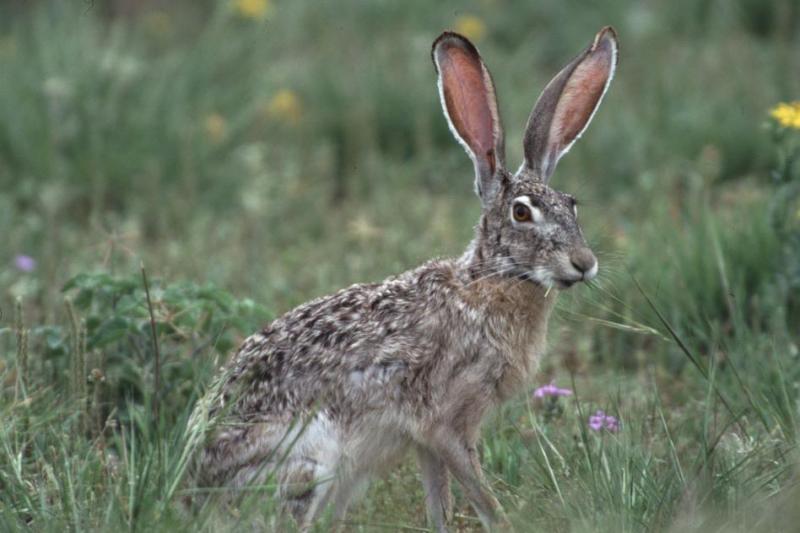Ears are an interesting adaptation
By Dave Hanks
This photo is of a Black-Tailed Jackrabbit – photographed in southern Texas. “What big ears you have!” - “All the better to hear you with.” So goes the dialogue in a popular children’s story. However, ears do more than listen. They are also a mechanism to dissipate heat in warm climates. ALLEN’S RULE states: Animals that live close to the equator, have longer appendages & a smaller body mass (greater percent surface area) to get rid of excess heat – ones closer to the poles, have shorter appendages and a larger body mass (less percent surface area) in order to conserve heat. Thus, jackrabbits in Texas have longer ears than the ones here in Idaho.
Jackrabbits have extra long hind legs, which enable them to bound in 20 foot leaps and cover the ground at 45 miles an hour. Besides running, they find protection by crouching under the sparse desert or prairie vegetation. They do not live in burrows but have scrapes under bushes where they lay in the shade during the day. Twilight and nighttime are their most active times.
Grass, sage, and cactus (in southern states) are their main food sources. They nibble around cactus spines until a hole is made big enough to insert their head. The soft inner tissue is then consumed. Around agriculture areas, they can be a problem, when their population peaks. Many alfalfa fields, on the edge of the desert, have been stripped during these periods. Also, rabbits are coprophagous. They have inefficient digestion & that requires them to pass all food through their digestive system twice - by eating their own dung.
Baby jacks are born in open nests. These are concealed in grass or under a bush. There are usually around 8 born and they can walk almost immediately. However, they do not leave the nest until they are about 4 weeks old. Rabbits are renowned for their reproductive ability and this is good because they are prey for so many different kinds of predators.
In the dark of night, when one is driving through rabbit country, their eyes gleam in your headlights. They seem to be everywhere – darting out in front of your vehicle and narrowly missing getting hit. Sometimes one will get run over and is left on the road as carrion for scavenging birds to feast upon.
|
